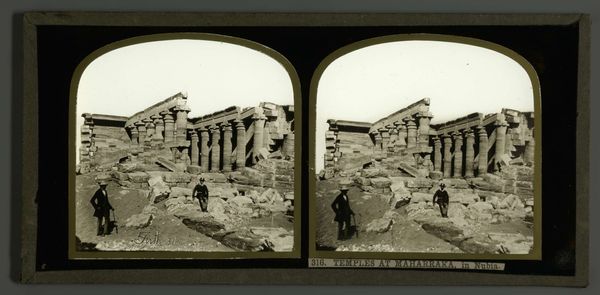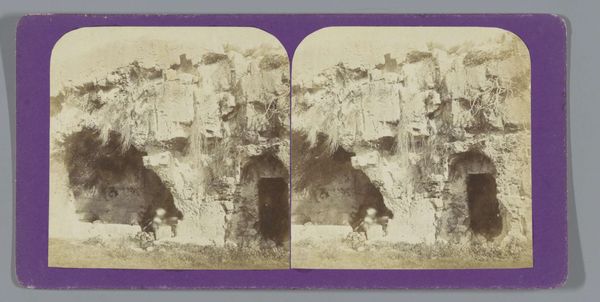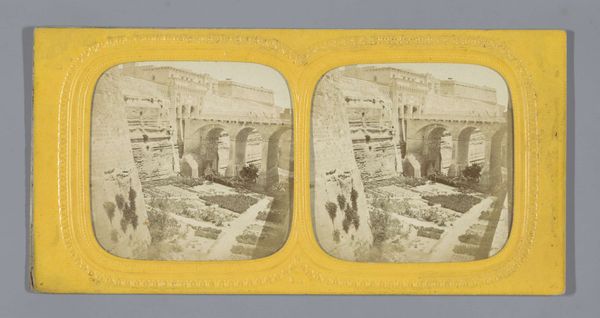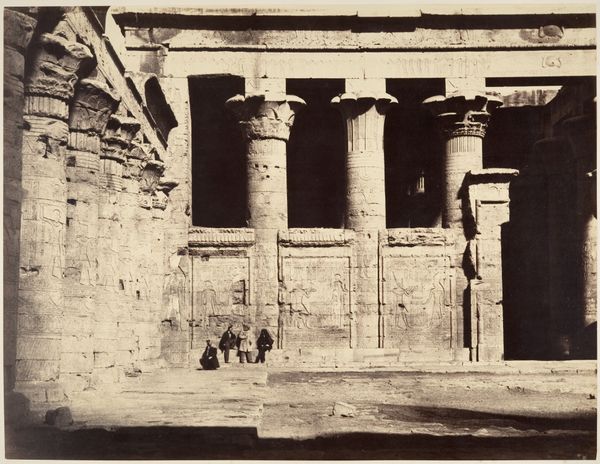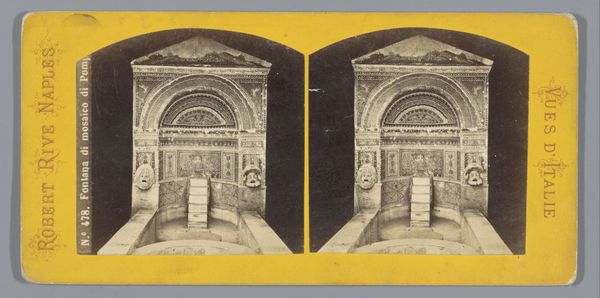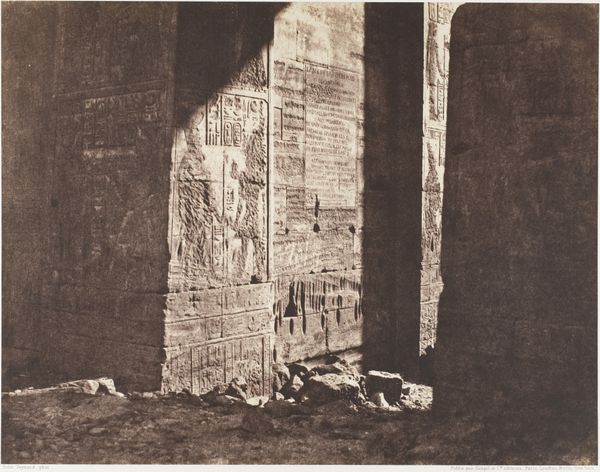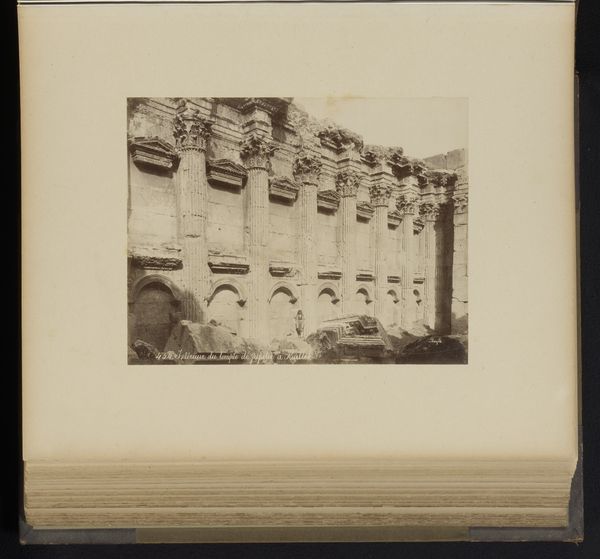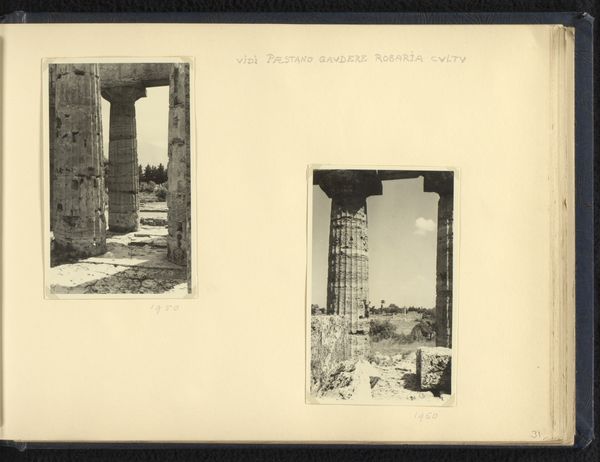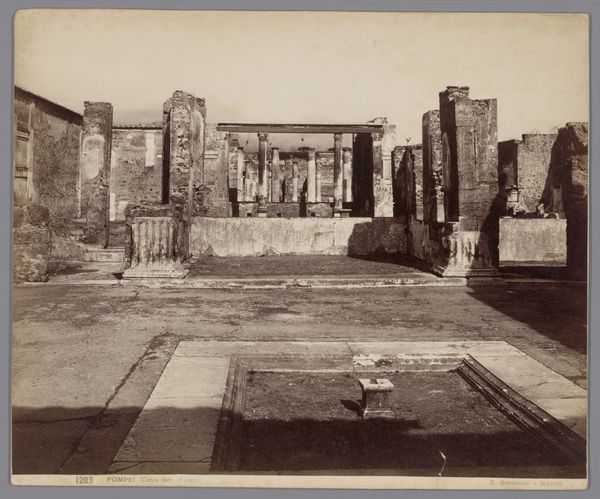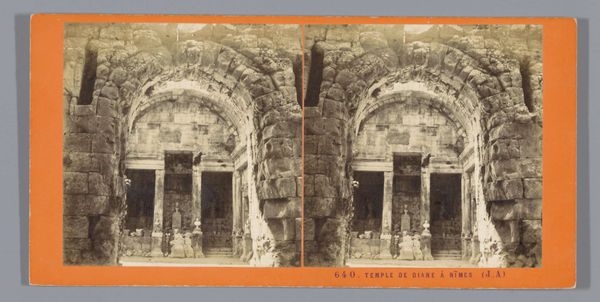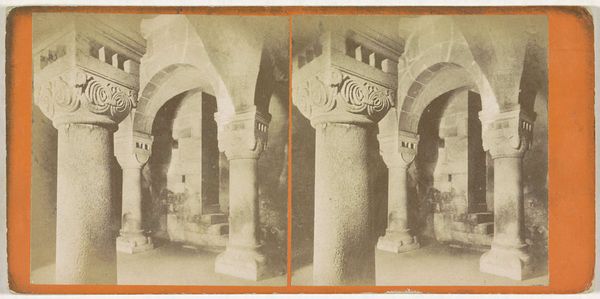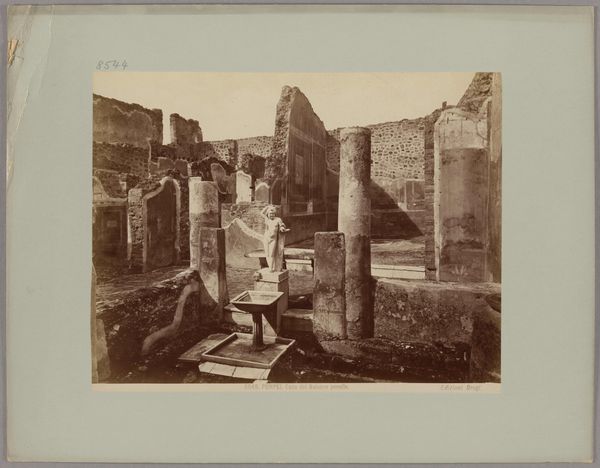
photography, architecture
#
sculpture
#
landscape
#
ancient-egyptian-art
#
historic architecture
#
photography
#
geometric
#
ancient-mediterranean
#
architecture
#
statue
Dimensions: height 75 mm, width 150 mm
Copyright: Rijks Museum: Open Domain
Editor: This is Francis Frith’s photograph, “Tempel van Dakka,” taken between 1858 and 1862. The stereoscopic print shows an interior view of the temple, and it's hard not to be struck by the weight of history etched into these stones. What strikes you about this piece? Curator: It is compelling, isn't it? Frith has captured more than just a temple. The geometric rigor, the imposing columns—they speak of enduring power, but also of the vulnerability of human constructs to time. Those hieroglyphs whisper across millennia, embodying cultural memory, a story etched not in ink, but in stone. Editor: You mention cultural memory. How does a photograph, a relatively new medium at the time, engage with something so ancient? Curator: Consider the symbolism: a temple, a sacred space. Even viewed through the lens of 19th-century colonialism, the photograph acknowledges and, in some ways, preserves a connection to an ancestral narrative. The shadows, the light... does it evoke feelings of reverence or something else? Editor: I think there's both reverence and a sense of something lost, almost like ruins holding their memories together. Curator: Precisely. The medium of photography is a memory-capturing device that in itself provides longevity, connecting to human cultural memory. What do you make of the figures depicted inside? Editor: They almost seem like ghosts; small and indistinct. Maybe Frith captured people in the process of carrying the story on through their presence and observing it too? Curator: Indeed! Their fleeting presence emphasizes the weight and duration of the temple, itself. A dialogue between transient humanity and eternal cultural significance, perhaps? Editor: I’m beginning to see how the photo is not just of the Temple, but also acts as a symbolic, historic representation. Curator: It offers more questions than answers, and I now understand how the medium itself functions symbolically too. Thank you!
Comments
No comments
Be the first to comment and join the conversation on the ultimate creative platform.
